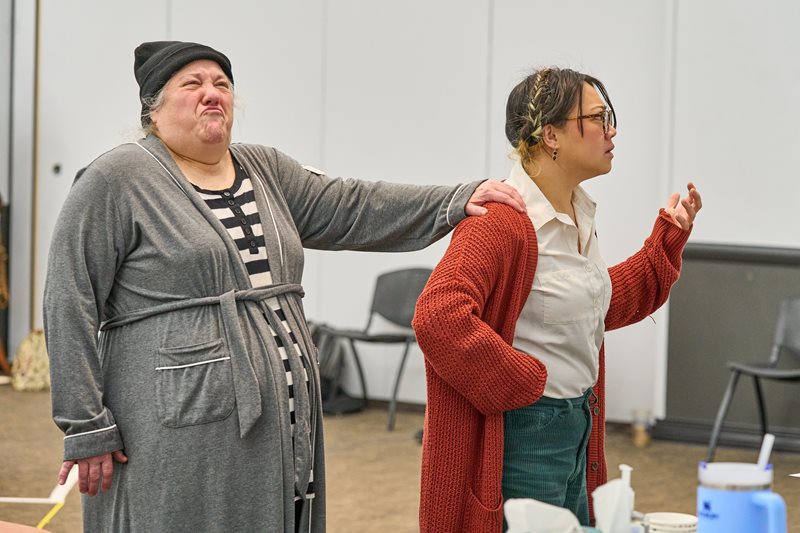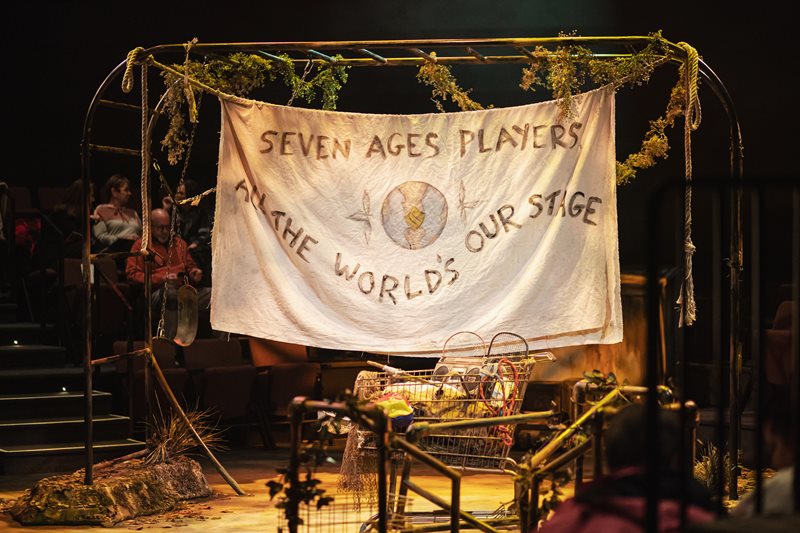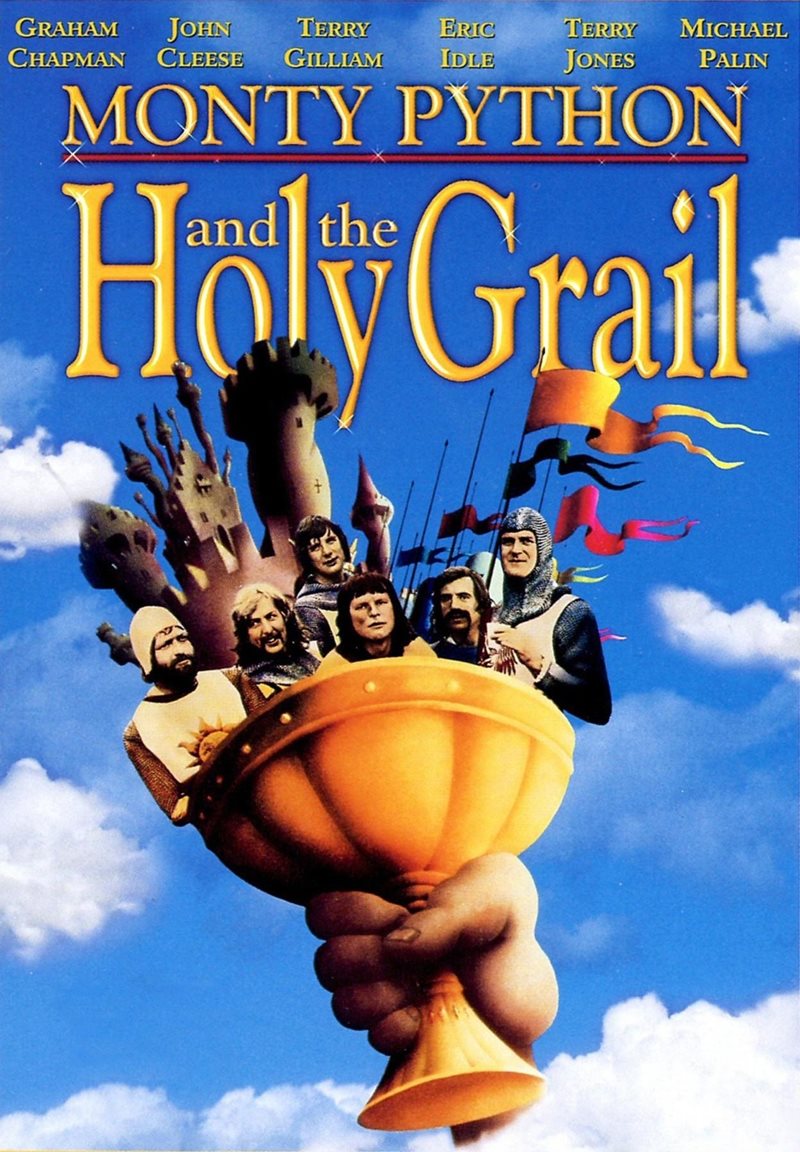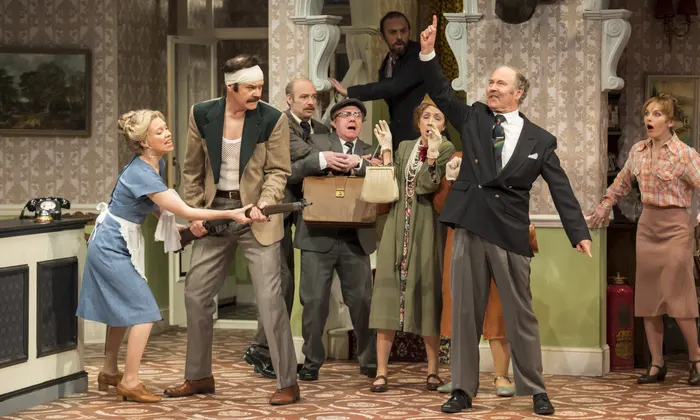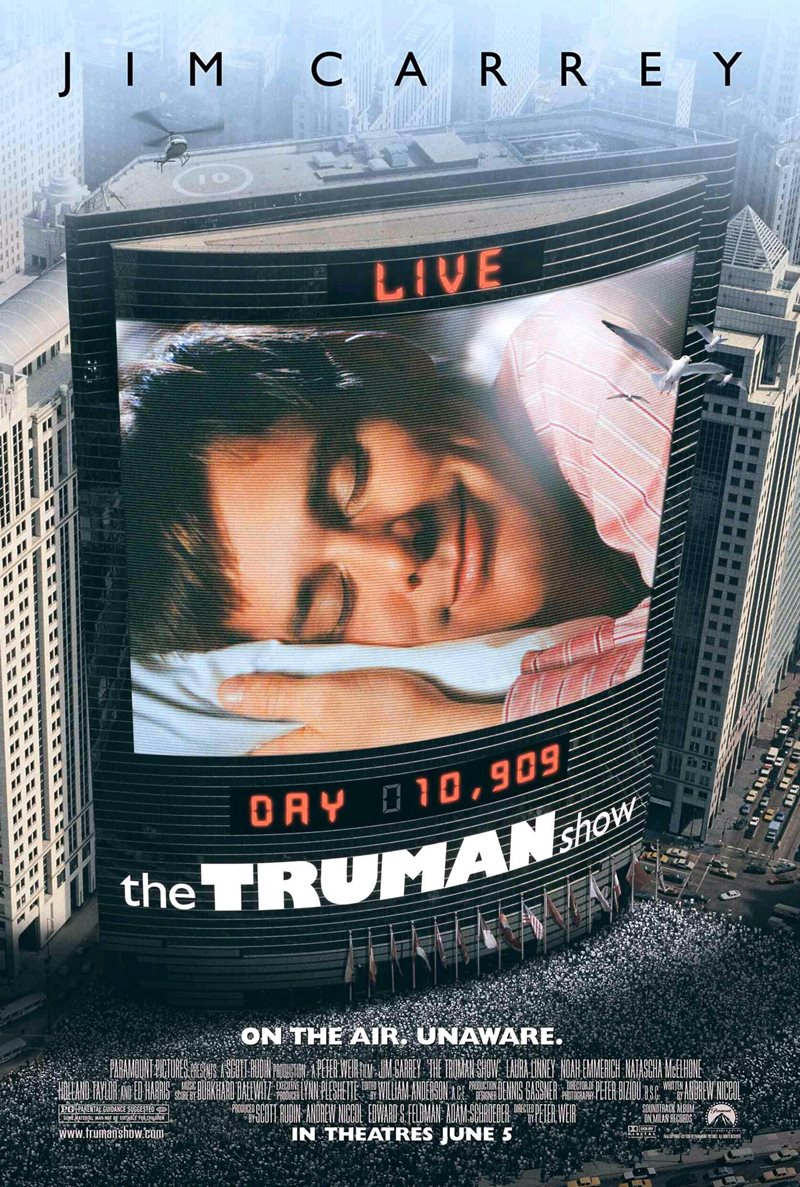Understanding Farce in Theatre
By Leslie Simon
There are so many interesting devices and ways that theatre uses to grab the audiences' attention or comment on current events. The final production of our 2023-2024 theatre season, Noises Off, has been called "the funniest farce ever written," so read on to learn about the history of farce, the play-within-a-play structure that Noises Off contains, and famous examples of both. Then come see "the funniest farce ever written" yourself as Noises Off opens March 22!
.
What’s a farce?
The Merriam-Webster dictionary defines farce as “a light dramatic composition marked by broadly satirical comedy and improbable plot.” Britannica Encyclopedia defines it as “a comic dramatic piece that uses highly improbable situations, stereotyped characters, extravagant exaggeration, and violent horseplay.”
No matter where you get your definition, farce is basically a form of comedy lower than comedy - it’s bawdy humor, drunken behavior, sexual jokes - the kind of stuff that might make you squirm when taking your grandmother to the theatre. And yet everyone laughs.
The elements of farce can be found going back as far as ancient Greece, such as in playwright Aristophanes’ comedies that were full of over-the-top stock characters, vulgar language, and absurd situations. Typical elements found in a farce include: mistaken identities, mocking of the typical social code, rebellion done in witty ways, comic surprises and reversals of expectations, and a quick speed to the dialogue and action.
The word “farce” began being used in the 15th century, and stems from a French word meaning “to stuff,” because initially comic moments were forced into religious plays to get laughs and attract more audiences at a time when theatre audiences were starting to dwindle. The term expanded to describe entertainment that had elements of clowning, acrobatics, caricature and indecency. During the Italian Renaissance, this evolved into commedia dell'arte.
These comedic farce elements attracted audiences back to the theatre because it gave them a way to laugh and cope with the craziness of the world, and it provided a not-so-subtle opportunity to mock the elite. Farce grew in popularity and spread across Europe, with famed playwrights such as Shakespeare and Molière employing these elements in their works.
.
What is mise en abyme?
In Noises Off, a metadrama (when a playwright draws attention to the fact that the audience is watching theatre) element showing conceptual awareness is also used, for the plot of the play is that the actors are performing a play called Nothing On. This boundary-breaking play-within-a-play style is called “mise en abyme” (meaning placed into the abyss) by the French, and “a turducken of comedy” by Noises Off Director Geoffrey Kent. This literary device has been used for hundreds of years, and is usually used to highlight and reflect on a plot point so that the audience is more engaged.
The term mise en abyme comes from heraldry, where “placed into the abyss” meant something more like “placed in center,” and a royal coat of arms would contain a small image of the shield inside the larger shield. This is similar to when two mirrors are facing each other, and whatever is reflected seems to go on into infinity.
Shakespeare was a big fan of this device, and famous examples from him include Hamlet, where Hamlet and friends stage The Murder of Gonzago (also known as The Mousetrap) that recreates the death of Hamlet’s father. In A Midsummer Night’s Dream, the rude mechanicals act out a play that mirrors the story of the star-crossed lovers in a hilarious way.
(Photo by Amanda Tipton of the Arvada Center production of A Midsummer Night's Dream)
More modern examples include Moulin Rouge, where Spectacular, Spectacular allows the penniless writer Christian and courtesan Satine to continue their real life affair undercover by playing people having an affair. Keep reading below for a list of farces and mise en abyme that you may know.
By utilizing the play-within-a-play style, playwrights are able to comment on events in the play, often using metaphors and analogies to highlight important aspects of real life they want the audience to be aware of, and to comment on the narrative to get audiences to think.
Interested in learning more about Metatheatre? Read this article about Metatheatre elements and how they were employed in Thornton Wilder’s Our Town.
Get tickets to Noises Off Here
.
Famous Farces From Popular Culture:
It’s a Mad, Mad, Mad, Mad World
Some Like It Hot
Arsenic and Old Lace
Animal House
Monty Python
Blazing Saddles
Cheech and Chong’s Up In Smoke
The Birdcage (based off La Cage Aux Folles)
A Fish Called Wanda
Three’s Company ( TV Show)
National Lampoon’s Vacation movies
Clue
Mr. Bean
Fawlty Towers (TV show)
Frasier (TV show)
Ace Ventura: Pet Detective
American Pie
Bridesmaids
Step Brothers
30 Rock (TV show)
.
Other Famous "Turduckens" (mise en abyme):
Hamlet
The Taming of the Shrew
The Mousetrap
A Midsummer Night’s Dream
8 ½ ( Fellini)
Three Amigos
The Never Ending Story
Rosencrantz and Guildenstern are Dead
Adaptation
Bowfinger
Being John Malkovich
Inception
Mulholland Drive
Shakespeare in Love
Last Action Hero
The Truman Show
The Matrix


